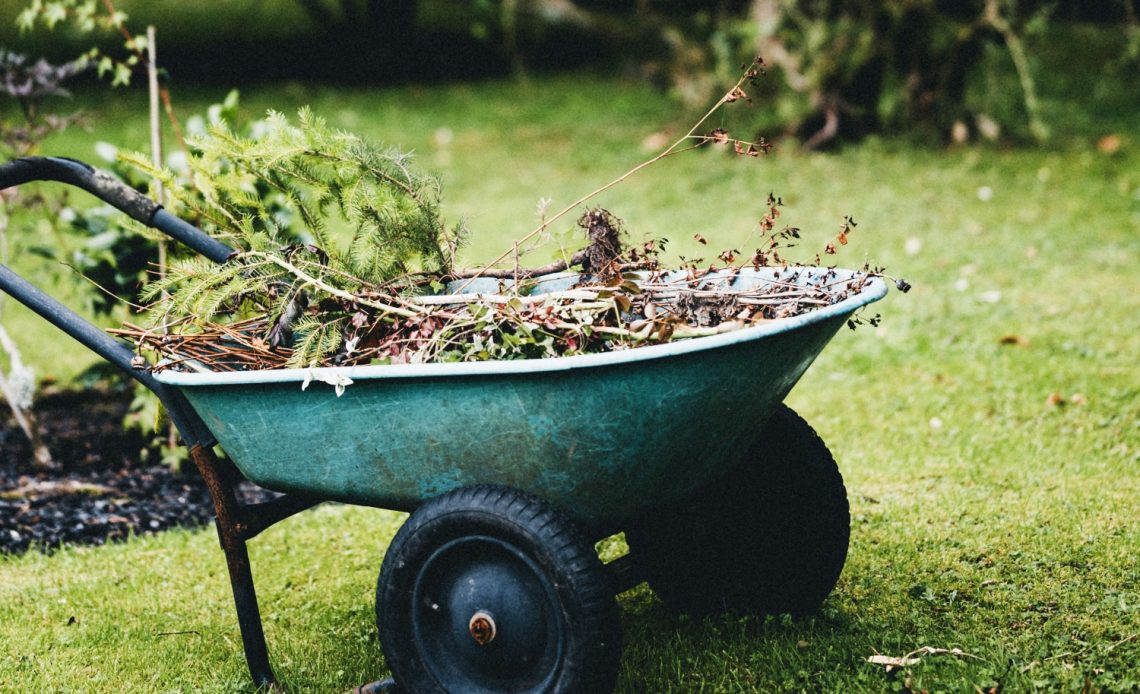

We’re here to help! Wild Yards is a completely free website that is 100% dedicated to helping you create a wildlife-friendly, sustainable yard. Read more
WildYards is reader-supported. When you buy a product through a link on our site, we may earn a comission. Every product is independently selected by our (obsessive) editors and our reviews are unbiased and objective. Read more about our mission or our privacy policy.
Looking out at your garden and seeing a sea of weeds staring back at you can be discouraging, to say the least. Weeding is a job that sounds easy enough on paper, but in practice, it’s back-breaking work. And the more weeds you’ve got to deal with, the more insurmountable the task can seem. But, don’t despair — we’re here to help! There are plenty of things that you can do to clear a garden full of weeds.
Boiling water, baking soda, and vinegar kill weeds quickly, usually within a 24-hour period. Digging the weeds up is always an option, but covering garden beds with a tarp ahead of time is just as effective, and can save you hours of labor.
How to get rid of a garden full of weeds
Preparation is the key to a good garden, and the first step involves clearing the space of weeds. Here are some of our favorite strategies for removing weeds from your garden beds so you can get planting fast.
Dig them up by the roots
Sometimes nothing beats the old-fashioned way! If your garden is full of weeds, the best way to tackle the issue may well be to remove them manually.
Raised beds are easy enough to weed with a hand trowel and weed fork. Remove weeds by digging up their roots, and be careful not to jostle the weeds around if they’ve gone to seed. Keeping the weeds as still as possible prevents seed dispersal, helping your weed problem improve down the line.
For large in-ground gardens, removing weeds with a hand trowel would be next to impossible. So invest in a weed remover, like a dutch hoe, that works by slicing off weeds at the roots. This allows you to get rid of more weeds in less time.
Claw weed pullers are another great option. These tools pull weeds up by the roots, and they allow you to do so from an upright position, sparing your back and knees.
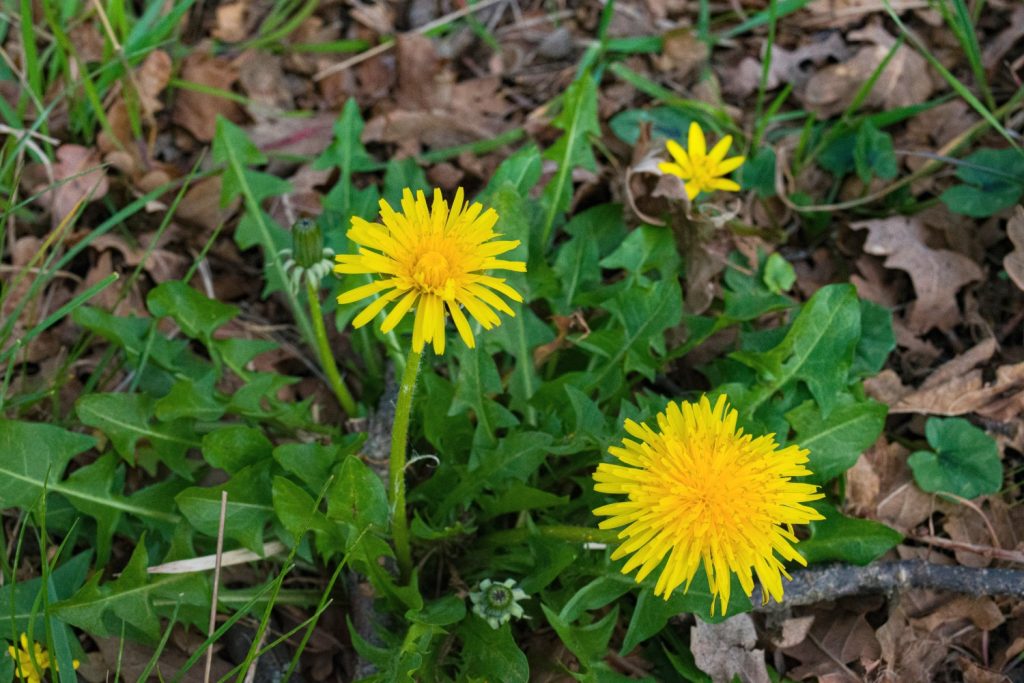
Mow the weeds down and uproot them
For large in-ground vegetable patches, we recommend keeping the beds mowed down, even during the off-season, to make the weeds more manageable later on. But if your garden has already gone wild, it’s still not too late to mow it down.
Your mower can be incredibly useful for weed removal. Mowing the weeds down gives you a good starting point. But it’s not a magic solution.
Some weeds, like purple nightshade, can grow quite tall. Mowing over them may not be enough to remove them, but it will knock them down and make it easier to clear them out.
After mowing the vegetable patch, uproot the biggest weeds by hand, then use a weed-removal tool (like this handy stirrup hoe/weed fork combo) to scrape the smaller weeds out of the beds.
If you grow in raised beds, then you won’t be able to mow over the weeds. So just pluck them out by hand and use your weed-removal tool as necessary to get them out of there.
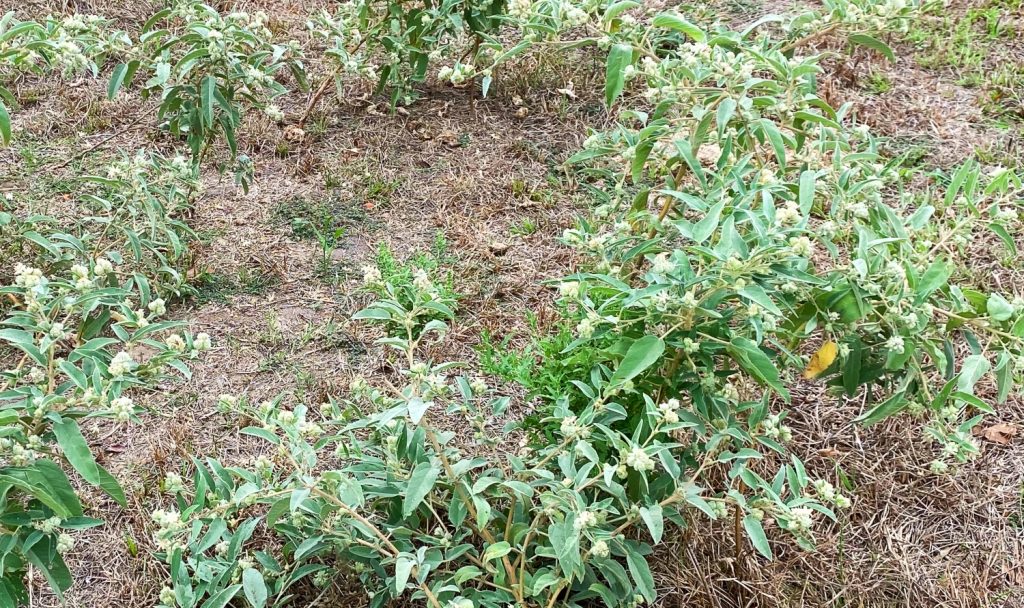
Plow the garden under
Tilling your garden soil may not eliminate your weed problem completely. But what it will do is loosen the weeds, making it much easier to remove them manually.
After mowing your garden to knock down the tallest weeds, use a rototiller to plow the soil under, then use a weed fork or metal rake to fish out the weeds.
This is also a great opportunity to mix in soil amendments before planting. After all, removing the weeds from the space will invariably rob the soil of valuable nutrients. So be sure to mix a healthy dose of manure or compost into the soil to replenish lost vitamins and minerals.
Use the Ruth Stout method
Have you ever heard of the Ruth Stout method? It makes gardening a lot easier. If you want to grow your own fruits and vegetables, but you want to do less than the bare minimum, the Ruth Stout method is for you.
Ruth Stout was a farmer who pioneered her signature method of gardening in the 1930s. Ruth discovered that by covering her garden in a mulch layer of sticks, straw, and wood chips at least 8” deep, her garden became self-sustaining.
Give your garden beds the Ruth Stout treatment by covering the beds with biodegradable materials.
At the end of the growing season, or at least 3 months before starting your garden, cover the space with small sticks, old hay, lawn clippings, leaves, mulch, and other organic materials. Make sure the layer measures at least 8” when you’re done.
This thick layer of detritus will break down, enriching the soil below, kind of like a reverse hugelkultur mound. Plus, the sheer thickness of the materials will snuff out anything growing underneath it, whether it’s grass, weeds, or sticker bushes.
We love the Ruth Stout method for organic gardening! Not only does the dense layer of materials kill weeds and prevent new ones from sprouting, but it also retains lots of moisture, so we don’t have to water our garden as often.
If you live in a hot, dry climate, the Ruth Stout method can change the way you garden for the better!
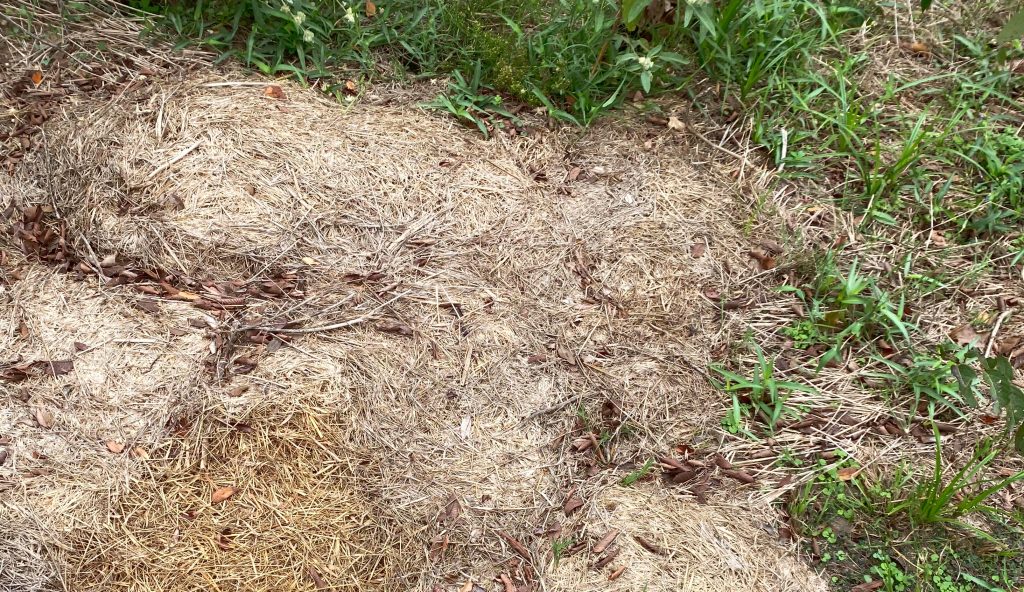
Try baking soda or vinegar
You may not think it, but these two common household cleaning agents can work wonders when it comes to eliminating weeds.
Baking soda kills unwanted plants by pulling water from their cells, causing foliage to shrivel up and die. Meanwhile, vinegar’s high acetic acid content burns weeds, killing them within about 24 hours.
Both baking soda and vinegar can be used to kill weeds, but you need to be careful not to over-apply them.
Too much baking soda may cause your soil to become more alkaline, and too much vinegar may make it too acidic. So to avoid significantly altering your soil’s chemical makeup, and doing serious damage to the plants in your garden in the process, apply baking soda and vinegar only as spot treatments.
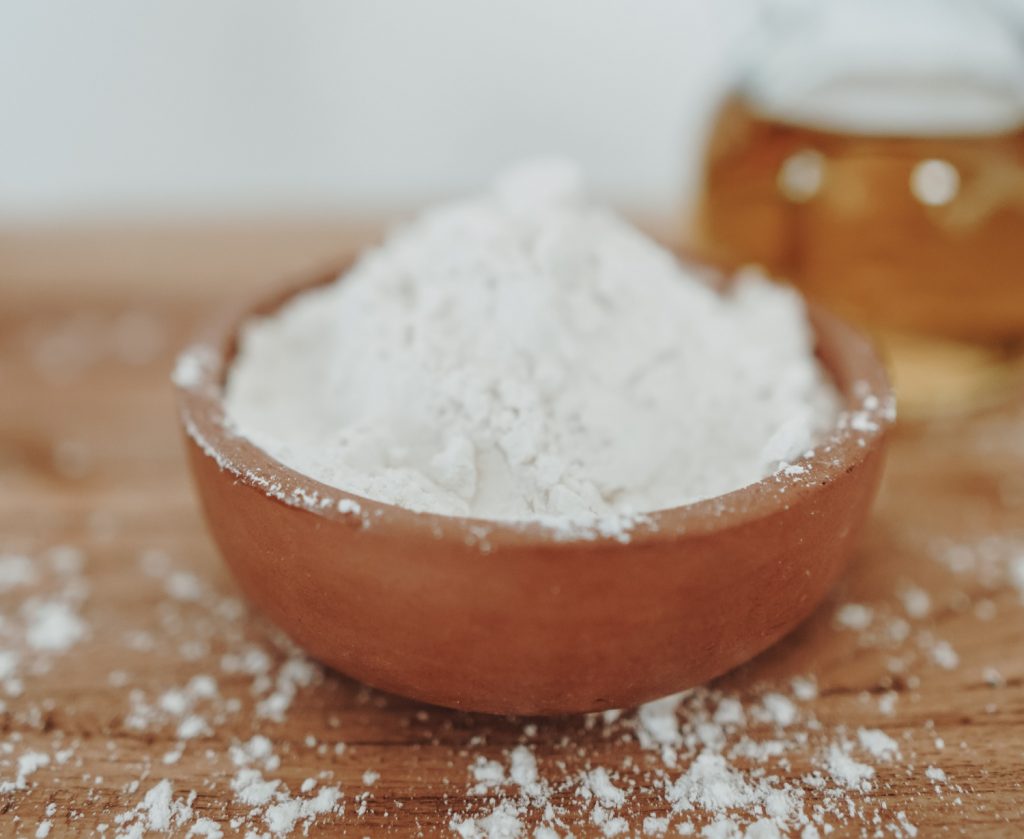
Apply a thick layer of wood chip mulch
Another alternative is to simply cover your garden with a thick layer of wood chip mulch.
The type of wood chips you choose is up to you — whether you go with pine, oak, or cedar, it doesn’t really matter. You can even use a mixture of different types of wood chips.
We usually recommend using locally sourced wood chips. Wood chips made from native trees will help replenish the right nutrients in your garden soil. But if, for whatever reason, you can’t use locally sourced wood chips, that’s okay, too.
A dense layer of wood chips that measures about 6” deep will smother weeds and keep your garden’s soil moist and ready for planting.
Softwoods, like pine, tend to break down much more quickly than hardwoods, like oak. Keep this in mind and check the mulch thickness monthly so you can top it off as necessary.
As the mulch breaks down, it will add structure to the soil. Mulch pieces prevent soil from becoming compacted, so air can easily penetrate and the soil will drain well.
When you’re ready to plant your seedlings, simply pull the mulch out of the way, set the plants, then spread the mulch around the plant all the way up to the base of the stem.
Wood chip mulch makes gardening so much easier because it doesn’t just keep weeds out of your garden during the off-season, but it also combats weeds during the growing season, so you don’t have to spend so much of your time on your hands and knees with a weed fork.
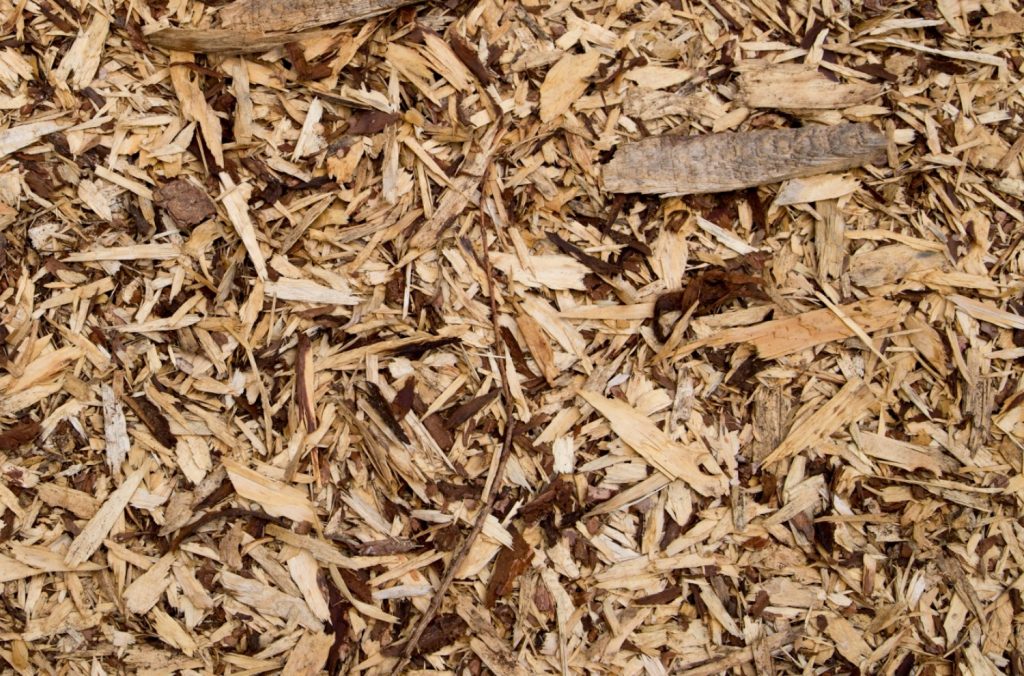
Burn them with a weed torch or heat gun
If you’ve ever wanted to just set fire to the weeds in your garden, then, boy, have we got great news for you!
Weed torches are handheld gas burners fueled by small propane tanks. The flame produced scorches the weeds, damaging them at a cellular level.
This method for killing weeds is incredibly useful because it allows you to target each weed individually and kill them quickly without introducing any damaging chemicals or other soil-altering substances into the ground below.
In fact, burning the weeds in your garden has the added advantage of enriching your soil. The decaying plant matter helps keep the soil loose and porous, and your plants will enjoy the extra dose of nitrogen they provide.
Just be sure to keep a hose on hand when you’re using your weed torch, just in case something catches fire that isn’t supposed to. Burning the weeds can be great for your garden. But the last thing you want is for your whole backyard to go up in smoke!
Plant a cover crop
Some gardeners choose to protect their gardens with a cover crop at the end of the season. In fact, some gardeners allow certain weeds to take over in the off-season.
Clover, purslane, ryegrass, barley, and alfalfa are good choices. These plants grow quickly and pack together tightly, snuffing out competing weeds to keep your garden clear of them.
One advantage to growing a cover crop is that certain plants can enrich the soil.
Legumes, like clover and alfalfa, for instance, are nitrogen-fixers. These plants pull nitrogen from the atmosphere and put them back into the soil, for the fruits and veggies in your garden to enjoy later on.
Some cover crops, like ryegrass, are annuals, so they’ll die back on their own when you get ready to plant in late spring.
But if your cover crop is still growing by the time you’re ready to transplant your seedlings, simply mow over the plants and plow them under with a rototiller before planting.
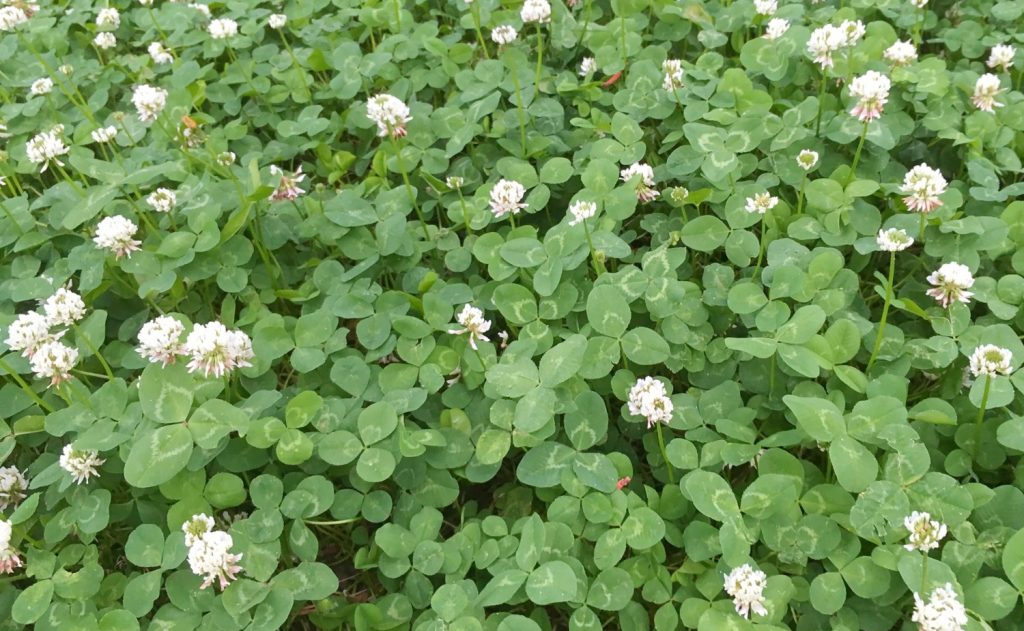
Cover the garden with cardboard
Once you’ve picked your last cherry tomato and gathered all of your cucumbers, rip the dead plants out of the beds, toss them onto your compost heap, and cover the beds with cardboard.
Cardboard is biodegradable, so it poses no threat to the environment. In fact, using cardboard to keep the weeds out of your garden is a great way to dispose of all of those boxes you’ve accrued from your online purchases.
Because cardboard is inert, it does nothing to influence the pH level or nutritional properties of your soil. As the cardboard breaks down, it even adds structure to the soil, so it stays nice and loamy, just the way your plants like it!
Lay flattened cardboard over the top of your garden beds, and use large rocks, stone pavers, cinder blocks, or anything heavy to keep the box layer in place. Alternatively, you can spread mulch over the cardboard to keep it in place and help it decompose.
Overlap the cardboard so it blocks out the sunlight and prevents air from reaching the ground below. This will help keep weeds and anything else from germinating.
The cardboard layer also helps seal in moisture, inviting beneficial bugs like earthworms to the garden to loosen the soil and make it more nutritious.
Water the boxes down well after spreading them out so they start to degrade. You can also spread a layer of newspaper underneath the boxes to add even more structure to the soil as these materials break down.

Use boiling water
For small-scale weed problems, boiling water makes an excellent weed killer.
Boiling water kills plants from the top down. A few pots full of boiling water can help you tackle a weed problem in a single afternoon.
This method is also especially useful for old window boxes, raised beds, and other limited spaces that you’re still getting prepped for planting.
Sprinkle corn gluten meal
Corn gluten meal is a byproduct of the corn milling process. And, interestingly enough, researchers at Iowa State University discovered that it works surprisingly well as an organic pre-emergent weed killer.
Spread corn gluten meal in late spring to early summer to keep pesky weeds out of your garden.
The corn gluten meal won’t harm your growing seedlings. But it will prevent grass and weeds from sprouting, and it will do so without introducing harmful chemicals into the soil.
As if that weren’t cool enough, corn gluten meal also acts as a slow-release nitrogen fertilizer, much like feather meal. Corn gluten meal releases around 10% nitrogen over a period of 12 to 16 weeks.
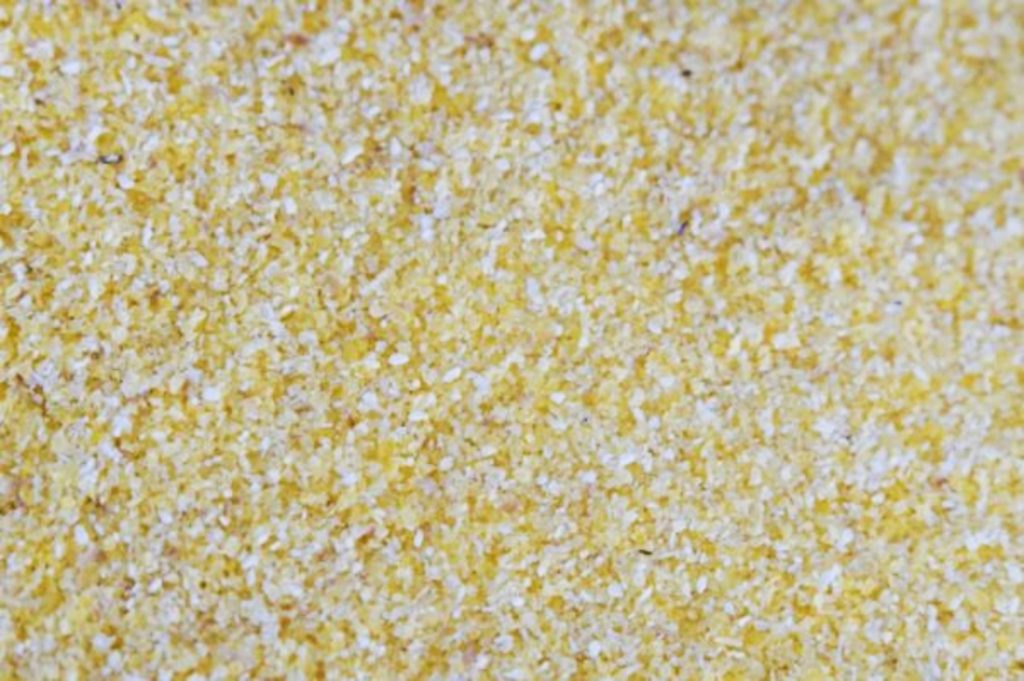
Spread out a tarp
If you want to figure out how to clear a garden full of weeds but haven’t got enough cardboard on hand, then try covering the beds with a tarp or some heavy construction plastic instead.
A tarp works in the same way that a layer of cardboard would. It keeps the light out and basically smothers the weeds.
Remember to use something heavy to keep the tarp in place.
What size tarp you use depends on the space you’re trying to cover. If you have a small space, then, obviously, a small tarp will work. But if you have a large space, it’s a different story.
Rather than use one large tarp to cover your large garden, we recommend using several small tarps. They’re much easier to work with as you’re laying them out and folding them back up.
It’s also much easier to weigh down smaller tarps than one large one. A big gust of wind can sweep a large tarp away, even if you think it’s weighed down well. But you can easily secure smaller tarps so the wind can’t carry them off.
If you haven’t got a tarp or construction plastic on hand, you can use anything that blocks out the light as a substitute — empty livestock feed sacks, burlap, and sheets of galvanized steel roofing metal work well, too.
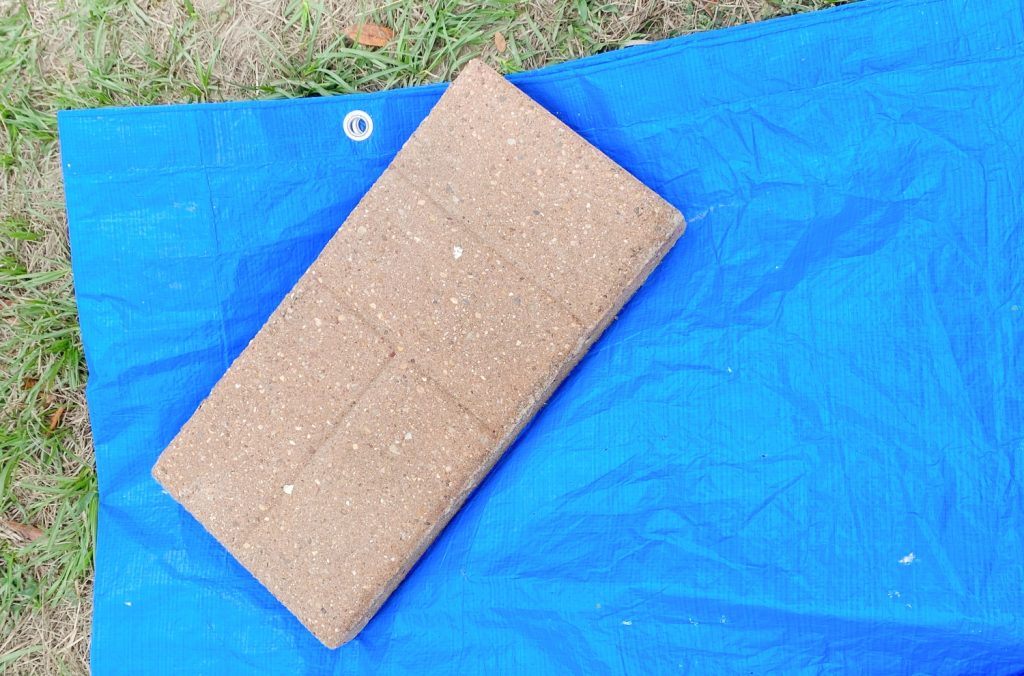
How can you prevent your garden from being overrun by weeds?
Once you’ve got your weed problem under control, it’s time to take a few preventative measures to keep things from getting out of hand again.
Start by weeding your garden regularly. Frequency is key when removing weeds by hand. If you do it often enough, you won’t have to work too hard.
When planning your garden layout for the season, keep your crops as close together as possible.
Obviously, you want to give the plants enough space so that they have plenty of room to grow without competing with surrounding plants for nutrients. But be careful not to keep them too far away from each other, as this just leaves room for weeds to sprout up.
Planting your crops together creates a dense layer of foliage, and this protects the ground from sunlight, effectively snuffing weeds out before they get a chance to germinate.
Lastly, consider growing a living mulch.
Certain plants, like the fast-growing mint, have shallow root systems compared to most vegetables. Mint is also considered to be quite invasive, growing quickly to create a thick carpet over your garden.
These plants protect the soil from the sunlight, keeping moisture in and weeds out. Plus, as the living mulch loses leaves, the foliage makes its way back into the soil, where the nutrients can be used to support the health of your fruits and veggies.
In addition to mint, other great living mulch options include chamomile, lemon balm, and oregano.
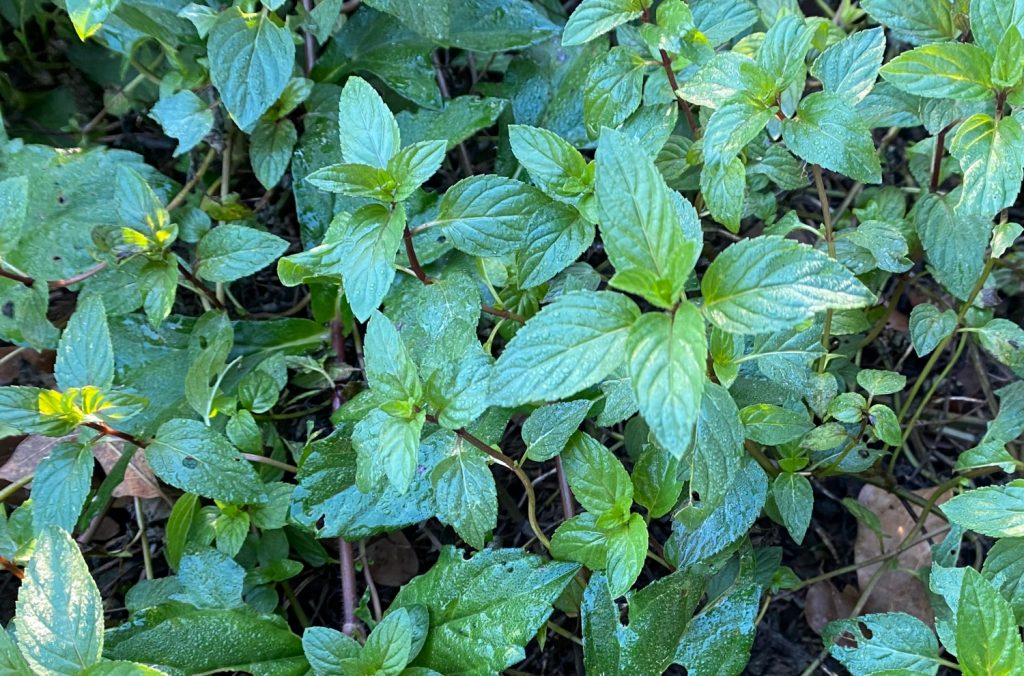
Persistence is key when it comes to keeping a garden weed-free
Dealing with weeds comes with the territory for backyard gardeners. Fortunately, there are plenty of ways to get rid of them so your plants can continue to thrive. Just remember, persistence is key!
By planning ahead and working smarter, not harder, you can keep weeds out of your garden so they won’t compete with your produce or have a negative impact on your future harvest.
